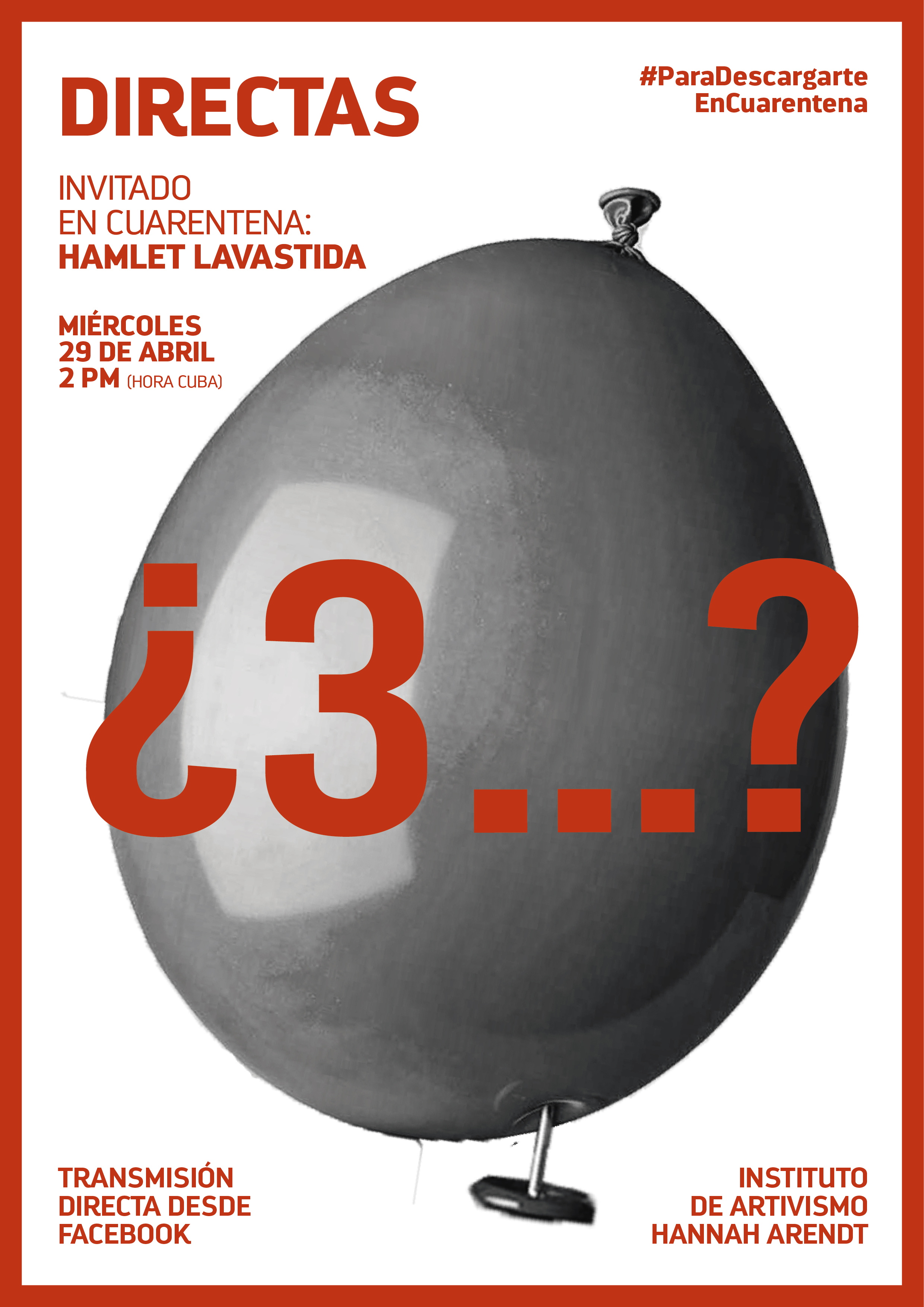-

-
DATA OF INTEREST
GUEST:
Hamlet Lavastida
Synopsis:
An analysis of the context in which Decree 370 is applied and the widely-rejected Decree 349 is born. The similarities between Cuba and China, in the context of the Covid-19 pandemic, are some of the topics explored by Hamlet in this live.
Bio:
Hamlet Lavastida
(Havana Cuba, 1983)
Studied at the Academia Nacional de Bellas Artes San Alejandro, (1998-2002) and the Instituto Superior de Arte, (2003-2009), as well as the Cátedra de Arte de Conducta, (2004-2006). His work has been presented in exhibitions such as: Iconocracia, ARTIUM, Centro-Museo Vasco de Arte Contemporáneo, Vitoria-Gasteiz (ES, 2015); Politics: I don’t like it, but it likes me, Centro de Arte Contemporáneo Łaźnia, Gdansk (PL, 2013); Liverpool Biennial. International 10: Touched (UK, 2010); Curadores Go Home, Espacio Aglutinador, Havana (CU, 2008). 7th Gwangju Biennale. (Cátedra Arte de Conducta), Gwangju (KO, 2008).
He has also participated in residencies such as: Kunstlerhaus Bethanien, Berlin, DE, 2020. A-I-R Laboratory, Centrum Sztuki Współczesnej, Zamek Ujazdowski. Varsovia, (PL, 2012); Residencia PERRO Aglutinador-Laboratorio, Havana, (CU, 2008). Currently his visual production stems from investigations and inquiries into linguistic and symbolic representation during the period from the beginning of the Cuban Revolution to the present. As such, speeches, terminology, laws, institutional practices, cultural policies, events, personalities, logos, icons, vignettes and images are the subjects of his analysis, in the face of a lack of public memory and transparency from institutions, leading to spaces and readings that are premeditatively re-edited or omitted by the official government narrative. These voids, as well as the stark frequency of research on these topics, make Cuban historiography incomplete and inexact, which leads to a discursive rusticity surrounding social and political imaginaries. And it is from this space that his aesthetic production considers the recuperation, resignification and current use of coercive terms and methodologies promoted since decades past and that were considered outdated.
His proposals emerge as a sort of objectual copy on certain lexical and semiotic dynamics in the moment of the construction and implementation of the so-called socialist institutionalization in Cuba, that is, in the periods of the 60s, 70s, 80s and 90s. From this focus his production re-aquires that materiality committed to the construction and physicality of the mid-twentieth century, establishing here a sort of archive and iconographic index as a register of these characterizations and operativities from the state towards the citizenry. It is an artistic practice that is structured like a visual essay taking all of those notions and normalized usages of ideological language over everyday language in Cuba. It is the objectivization and taxonimization of frequent incorporations and importations of ideological, political and cultural habits with little to no precedent, since the Sovietization at the state, legal and constitutional level within the Spanish American universe has only occurred in Cuba.
-
VIDEO
Live with Hamlet Lavastida
